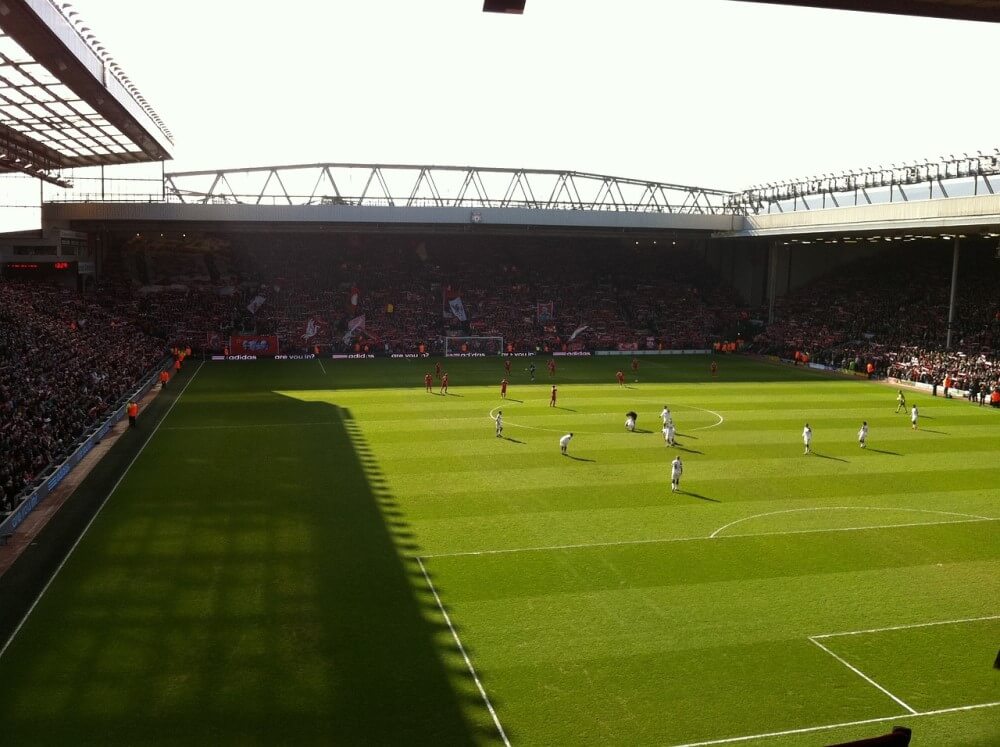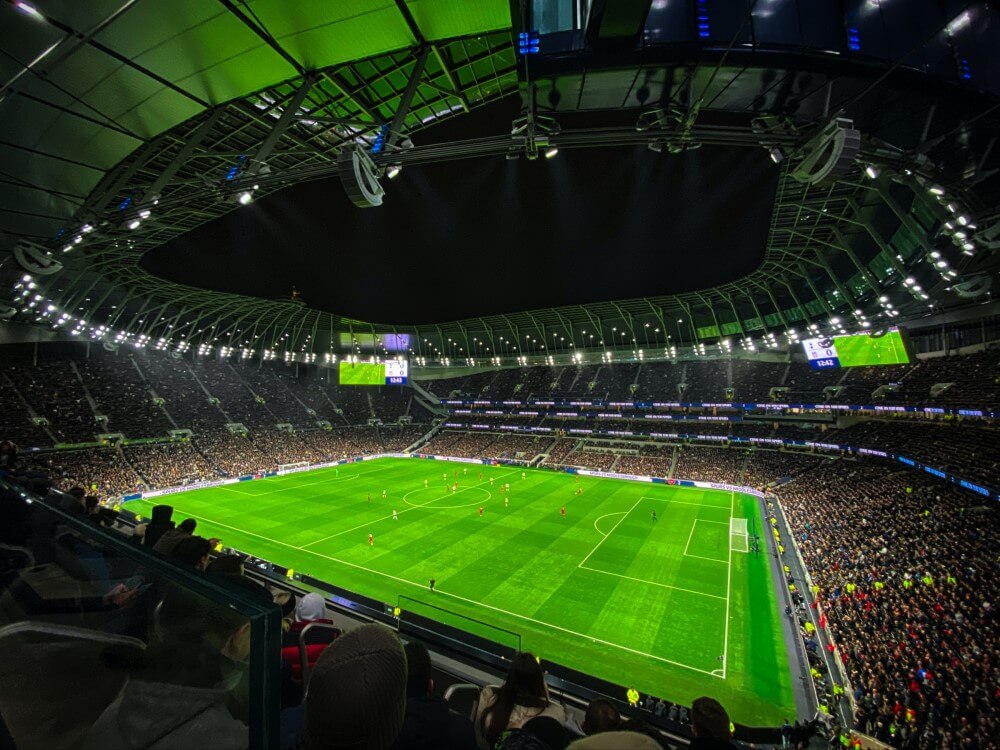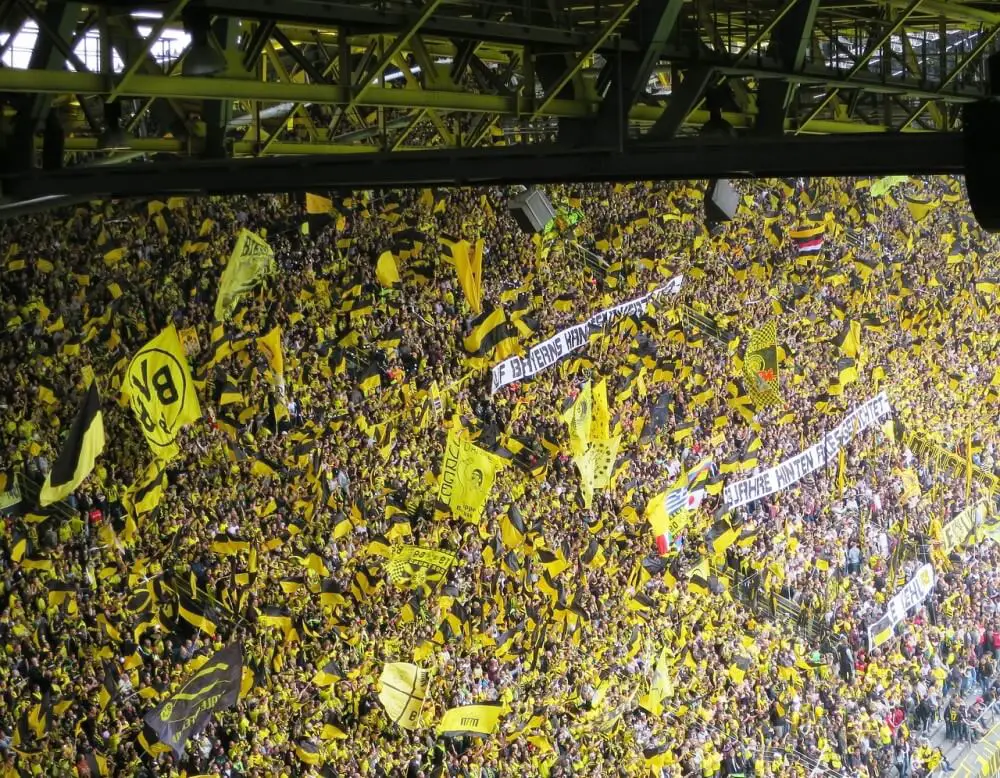In stadium architecture, a ‘kop’ is a term used to describe a type of stand that’s located behind one of the goals and has a steep incline. Stands that are described as a ‘kop’ typically feature only one tier, which is because the word ‘kop’ comes from the Dutch word ‘kopje’, which translates as a ‘small hill’.
After first being used to reference a stand at Arsenal’s Manor Ground in 1904, kops have been prominent in football fan culture ever since. A kop’s purpose is primarily to accommodate standing spectators, provide them with an unobstructed view of the pitch, and to create an intimidating atmosphere for opposing teams.
Kops have become a common feature of stadium design in many countries, serving as a unique and recognizable aspect for clubs and national teams. However, they have changed in nature, as safety and crowd control concerns have led to the introduction of all-seater stadiums in many parts of the world, resulting in a decline in the use of terracing.
Nonetheless, many football fans still consider kops to be an essential part of the game’s atmosphere, and their presence in stadiums is still highly valued by supporters.
Why are kops called kops?
In short, kops are called kops because of the striking visual similarity between stands in stadiums and the famous Spioenkop hill in South Africa, which was where a famous battle was fought during the Boer War. The word ‘kopje’ in Dutch means ‘small hill’ in English.
When the word ‘kop’ was first introduced, the Boer War was only six years before – therefore, the hill would’ve been prominent in people’s minds. It is thought in particular that the silhouette of thousands of fans standing on the terraces was reminiscent of soldiers standing on top of the Spioenkop.
Why are kops used in stadiums?
Kops are used in stadiums for reasons that are partly aesthetic, partly practical and partly traditional. Namely, they look impressive, they can help generate a better atmosphere at the stadium, and they have a strong reputation among football fans.
After all, it was because of the striking aesthetics of Liverpool and Arsenal’s new home ends that the comparison to the Spion Kop was first used. The sight of thousands of fans in a single steep tier can be something to behold, and it was partly for this reason that kops were first used.
This also has a bearing on the way a stadium sounds on a match day. The steep angled stands that usually make up a kop are designed to not only accommodate as many as possible, but also to create a wall of noise that cascades down onto the pitch. This makes a stadium more intimidating for visiting teams, making for a practical benefit.
And, due to their hallowed place in football fan culture, kops are also used for reasons of sentiment and tradition. Kops help to create a sense of identity and belonging for fans, who often view their position in the stadium as a key part of their fan culture.
This is the reason why kops are built even in the new stadiums of today. For example, the new stadiums at Tottenham Hotspur and Everton have been designed to incorporate huge single-tiered stands, despite the fact that multi-tiering would likely be a more efficient use of space.
Overall, kops are a key part of many soccer stadiums around the world, providing a unique and powerful experience for fans and players alike.
What are the most famous kops?
There are many famous examples of kops around the world that have capitalised on their success through the previous decades. Each one is a hugely important part of their respective stadium’s identity, and often is the driving force behind the atmosphere during games.
Here are just some of the examples of stands that are either named after, or may be termed kops:
- Spion Kop – Anfield, Liverpool, England

Perhaps the most famous of all the kops in world football, the Spion Kop at Anfield was one of the first stands to be described as such, in 1906. At its peak, it held room for over 27,000 people standing behind one goal.
Despite multiple renovations, Anfield’s Kop remains to this day an iconic symbol of Liverpool FC and is revered by fans around the world.
- The Kop – Hillsborough, Sheffield, England
The Kop at Hillsborough Stadium, Sheffield, is one of English football’s biggest remaining kops, with an overall capacity of over 11,000. This was once even bigger, but the standing room was replaced with seating following the tragic 1989 Hillsborough disaster that occurred at the same stadium.
- South Stand – Tottenham Hotspur Stadium, London, England

Colloquially referred to as a kop, the South Stand at Tottenham Hotspur’s new stadium in London, England is notable for being a recent addition to the list of world kops. The old White Hart Lane didn’t have a kop, but the new building incorporated one into its plans.
The South Stand, as per its official name, holds up to 17,500 fans and, despite only being completed in 2019, has already gained a reputation for generating a great atmosphere. The stand features a range of facilities, including bars, restaurants, and lounges.
- Sudtribune – Westfalenstadion, Dortmund, Germany

The Sudtribune, also known as the South Stand or informally as then ‘Yellow Wall’, is a famous stand at Signal Iduna Park, the home stadium of Borussia Dortmund. It is the largest terrace-style stand in Europe and holds over 24,000 fans, creating an electric atmosphere during matches.
The stand is renowned for its passionate and vocal supporters, who display impressive choreography and create a sea of yellow and black, the club’s colours. The stand has a rich history dating back to the 1970s and has undergone several renovations over the years.
- De Kop, NAC Stadion, Breda, Netherlands
Although not officially labelled as a kop, De Kop, at NAC Stadion, home of NAC Breda, is known for its kop-like stand at one end, which is often called ‘De Kop’. Fans of the Dutch club were one of the first in The Netherlands to adopt the English style of chanting and supporting, and De Kop is a nod to this.
It only has a capacity of approximately 1,200 fans, but, despite its small size, De Kop is renowned for creating a lively and boisterous atmosphere during matches.
That’s it for our building wiki on ‘what is a kop’. They are a beloved feature of football grounds all over the world – so much so that even now stadium architects often incorporate them into their building plans.
For more news, compilations and discussions from the world of urban construction and architecture, explore our selection of skyscrapers and tall building articles.
Or, for similar guides to definitions and meanings of terms within the building profession, take a look through our range of building wikis, including a guide to what is a ha-ha.
Last Updated on 18 March 2023 by Michael